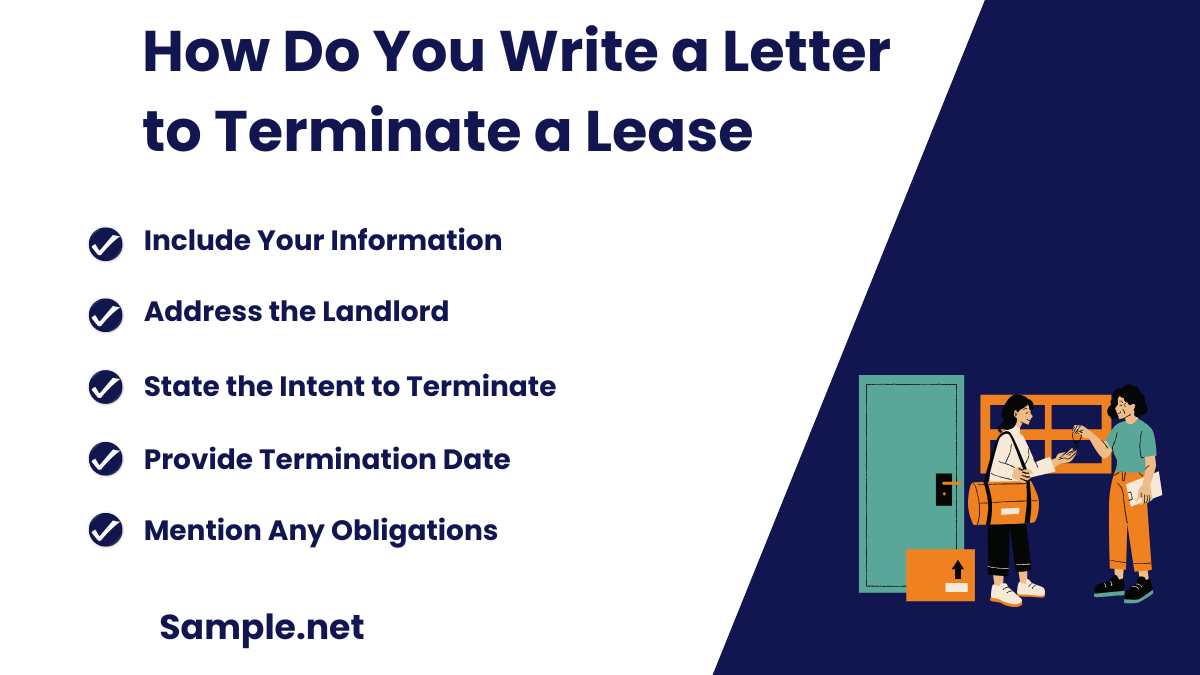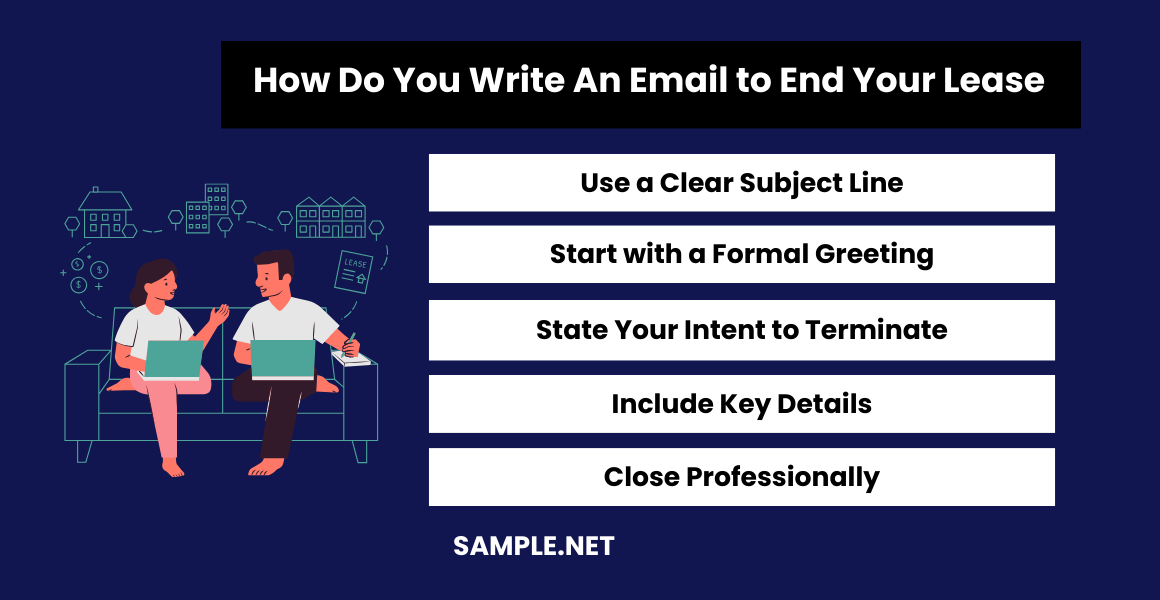Lease Termination Letter Samples
-
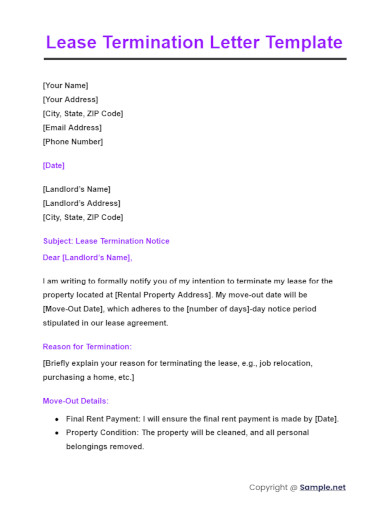
Lease Termination Letter Template
download now -
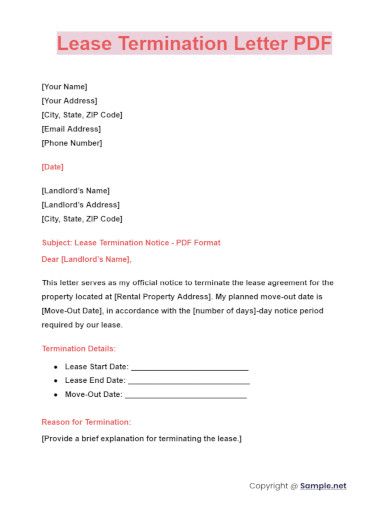
Lease Termination Letter PDF
download now -
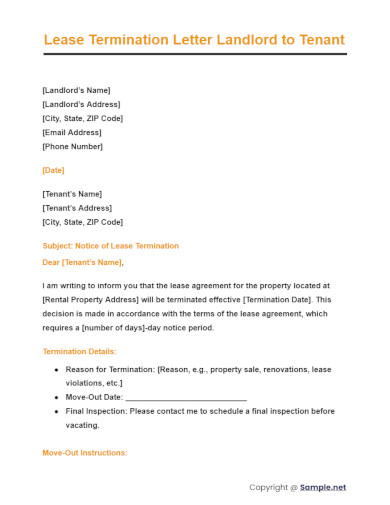
Lease Termination Letter Landlord to Tenant
download now -
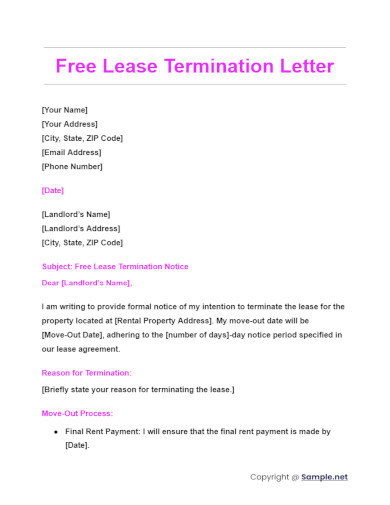
Free Lease Termination Letter
download now -
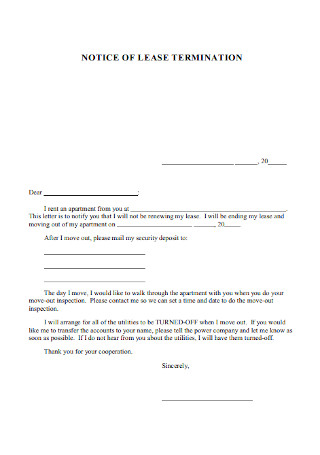
Notice of Lease Termination Letter
-
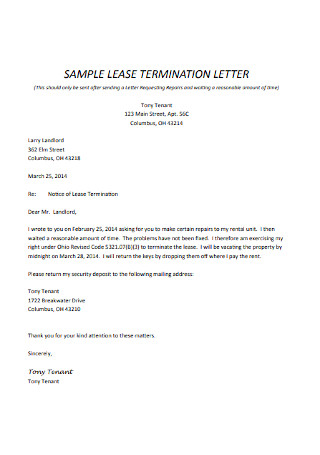
Sample Lease Termination Letter
-
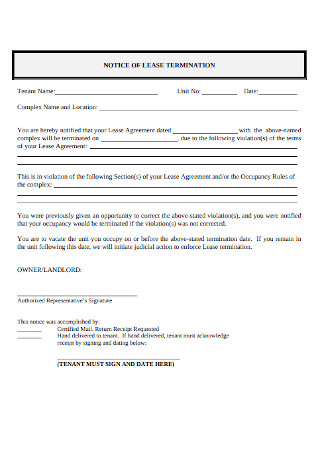
Notice of Lease Termination Letter from Lanlord to Tenant
-

Lease Termination Letter Sample
-

Lease Agreement Termination Letter
-
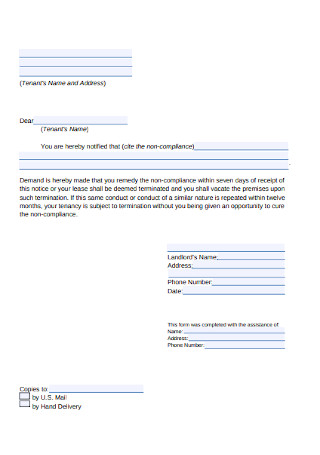
Lease Termination Letter to Tenant
-

Lease Termination Letter From Landlord to Tenant Sample
-

Landlord Lease Termination Letter
-
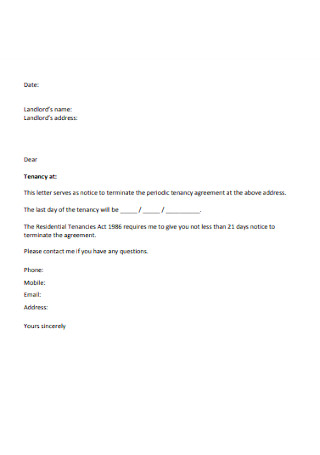
Landlord Lease Termination Letter Sample
-

Apartment Lease Termination Letter
-
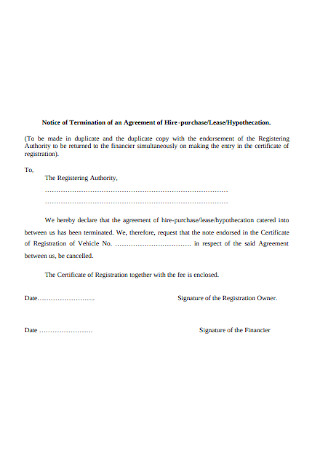
Lease Termination Agreement Letter Sample
-
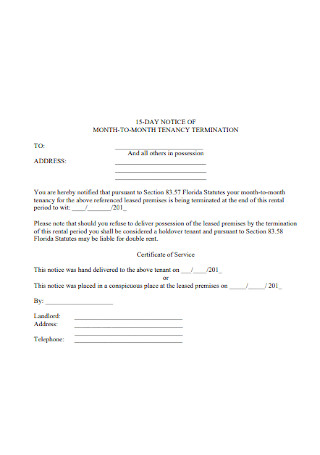
Month to Month Lease Termination Letter
-
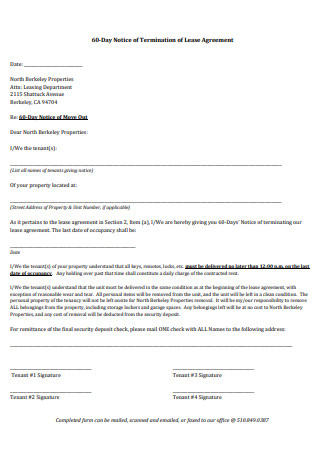
60-Day Notice of Termination of Lease Agreement
-

Rental Lease Termination Notice
-

30-Day Notice of Termination of Lease
-
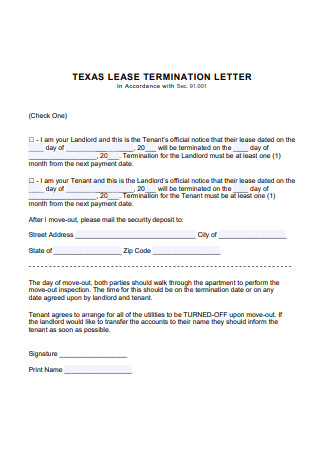
Lease Termination Letter Form
-

Domestic Violence Lease Termination
-

Early Lease Termination Letter
-
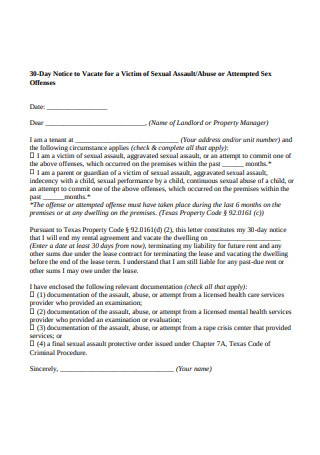
Formal Lease Termination Letter
-
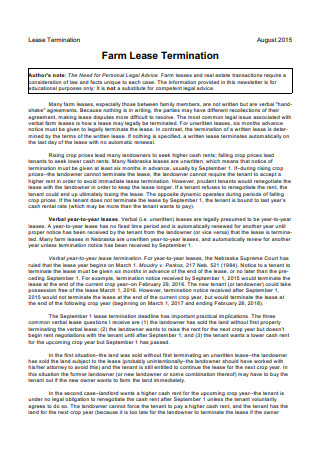
Farm Lease Termination Notice
-
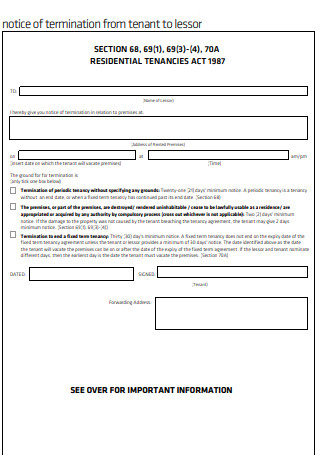
Realty Tenant Lease Termination Form Letter
-
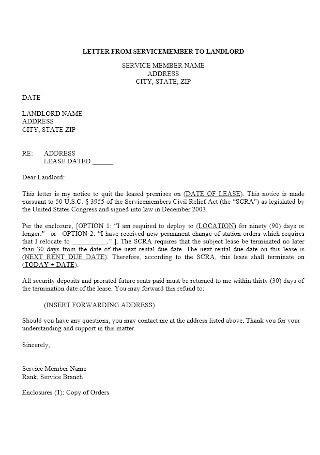
Letter from Service Member to Landlord Template
download now -

Company Lease Termination Letter
download now -
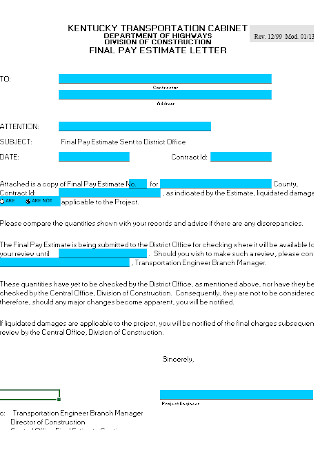
Tenant Final Pay Letter
download now
FREE Lease Termination Letter s to Download
Lease Termination Letter Format
Lease Termination Letter Samples
What Is a Lease Termination Letter?
The Elements of a Lease Termination Letter
How to Write a Lease Termination Letter
The Dos and Don’ts of a Lease Termination Letter
How do you write a letter to terminate a lease?
How do you write a letter to vacate a rental property?
How do I write a notice letter to my tenant?
How to give notice to tenant to vacate California?
What to write to a landlord when moving out?
How do you write an email to end your lease?
How do I write a 30 day notice letter to my landlord?
How do you thank your landlord when moving out?
How much notice do I need to terminate a tenancy in MD?
What happens if there is no termination clause in a lease?
What is the journal entry for early termination of lease?
Does an email count as a written notice?
How do you say goodbye to a landlord?
What to write to a landlord when moving in?
Download Lease Termination Letter Bundle
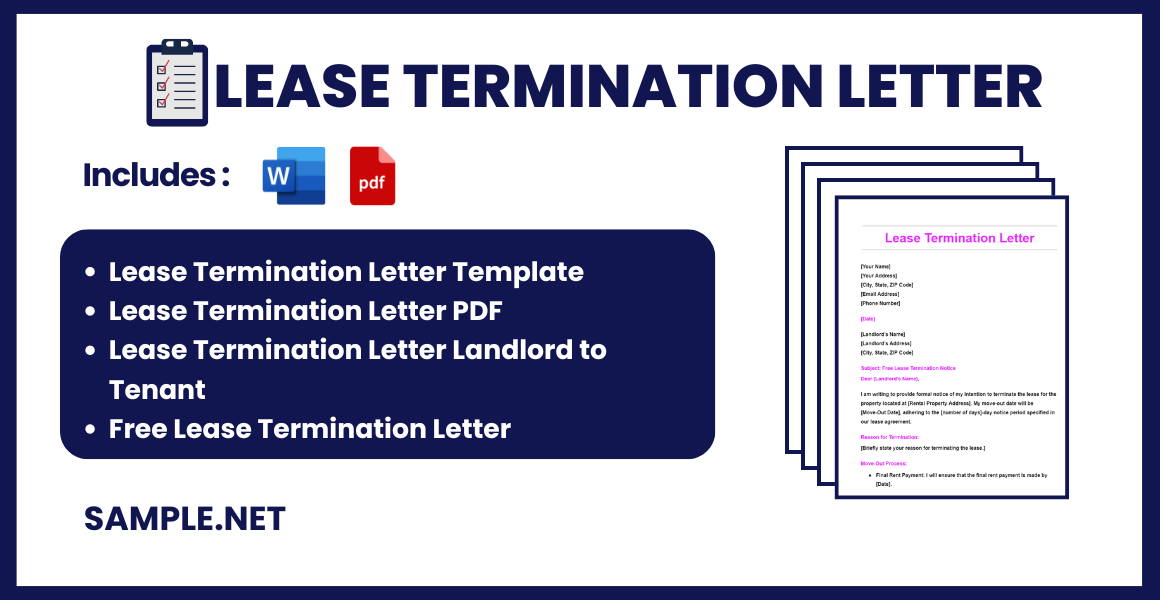
Lease Termination Letter Format
[Your Name]
[Your Address]
[City, State, ZIP Code]
[Email Address]
[Phone Number]
[Date]
[Landlord’s Name]
[Landlord’s Address]
[City, State, ZIP Code]
Subject: Lease Termination Notice
Dear [Landlord’s Name],
I am writing to inform you of my decision to terminate the lease agreement for [Rental Property Address], effective [Termination Date].
Reason for Termination:
[Brief explanation]
Please advise on the necessary steps for a smooth transition and the return of my security deposit.
Thank you for your understanding.
Sincerely,
[Your Name]
What Is a Lease Termination Letter?
A lease termination letter, also referred to on occasion as a mutually agreed upon termination agreement, is a document intended to completely release a tenant from his or her responsibilities as the leaseholder of a particular property. It is submitted to the tenant’s landlord as an official or formal way of breaking the lease before its intended date. One’s reasons for doing so can include, but will not be limited to, the end or changing of employment status, specific medical issues, and the dissolution of a romantic relationship. Whether or not the tenant in question is granted the termination is at the discretion of the landlord. Should the request be granted, then getting the approval in writing will be helpful when it comes to handling potential disputes in the future.e it personal or legal
Rental applications for apartments as opposed to purchasing one is a move that has been steadily gaining popularity over the years. Although most people still prefer to own their own homes, the housing crisis experienced by the United States has influenced many to turn to the alternative. Despite that, the percentage of renters in the US fluctuate between 36% and 37%, with similar percentages seen in countries like the United Kingdom and Canada, among others. On the other end of the spectrum are countries with low percentages of renters. These would include Singapore with only 9.7% of its population as renters, Slovakia with 10.7%, Russia with 12.9%, Poland with 16.3%, and Norway with 17.2%. It is therefore conceivable for many people to see renting as a purely temporary thing, with tenants dishing out lease termination letters when the right moment arrives, regardless of whether the agreed-upon end of the lease is reached or not.
The Elements of a Lease Termination Letter
Once you decide to break the lease and write a lease termination letter, it is important for you to learn about the important elements. These are present in lease termination letters intended for numerous types of property rental, including college property rental and property lease agreement. The following are the ones you need to take note of:
How to Write a Lease Termination Letter
Having gained the knowledge of the important elements present, now comes the part where you learn the general process of writing a lease termination letter. Below are step-by-step instructions intended to guide you through said process in a manner that is simple, easy, and fast, complete with descriptions of each step.
Step 1: Start With Your Contact Details and Address
To kick things off, write your current phone number, address, city, state, and zip code at the top-most part of the document. This will be followed by the landlord’s own details, written directly below. For the landlord’s address, write down the address stated on the original lease. Alternatively, you may write the apartment company’s name in lieu of the landlord’s. You may also see Commercial Lease Proposal
Step 2: Proceed With a Subject Heading and a Standard Greeting
Below the contact details and addresses, you need to address what the document is about. You can write ‘notice of intent to vacate,’ for example. Afterward, begin the letter proper with a greeting. There are a few ways you can go with this. One would be to write something along the lines of ‘Dear…’ and follow it up with the landlord’s name. As an alternative, you can put the property manager’s name if they aren’t one and the same, or the apartment manager’s name. You may also see Assignment of Lease
Step 3: State Your Intention to Vacate The Property Clearly
The first paragraph will be dedicated to your statement regarding the vacating of the rented property. In this same paragraph, include elements such as the intended vacate date, the name of the property you are vacating, and when the lease began. Afterward, write down that this document is to serve as your written notice. You may also see Hotel Lease Proposal
Step 4: Move On to the Discussion of the Remaining Responsibilities
Having written your intentions clearly and specifically, the next paragraph will center around how you and your landlord can move on from this termination. Provide your contact number yet again so that your landlord can schedule with you the necessary walk-through inspection. Discuss the delivery of your security deposit and where it is to be sent to, which is where the element of your forwarding address is to be included. Assure your landlord that you are open to communicating should other questions or issues arise after the move has taken place. You may also see Apartment Lease Contract
Step 5: Conclude With a Closing Remark
To end your letter on a high note, include a closing remark of your choice for your landlord. Once you have done that, wrap things up by placing your name at the bottom of the page. It is worth mentioning that some space between the remarks and your name may be needed since that is where you will affix your personal signature after the document has been printed out. You may also see Option to Lease Agreement
Step 6: Review Your Letter Before Sending It to Your Landlord
Go over the entire document a few times after you finished writing it the first time. There may be some typos, spelling errors, grammatical issues, and information inaccuracies that will need fixing. Considering how important this particular document is, it is imperative to have little to no mistakes at all. Failing to fix your letter’s mistakes even has the potential to lead towards issues—be it personal or legal—between you and your landlord down the line. You may also see Restaurant Lease Proposal
The Dos and Don’ts of a Lease Termination Letter
In addition to any elements and actual steps needed for an early lease termination letter, there are a few other things that you may need to take into account. The following list of dos and don’ts are guaranteed to contribute to a letter of much higher quality.
Dos
Do be polite and formal.
A lease termination letter is a document that is still considered a legal document and as such, you need to approach its tone with the necessary formality. Any issue that you may have regarding the lease, the property, or with your landlord must still be addressed as politely as possible because of the same reason. It will not only prevent potential issues from arising, but a polite and formal approach will also be greatly appreciated by your landlord. You may also see Standard One Year Lease
Do keep your specific details simple and clear.
The details in question here would not only include your reasons for wanting to terminate the lease, but also your forwarding address, contact details, and the intended vacate date. When including any of those details, it must be said that there should be nothing vague or unclear about them. Do your best to write them in a way that is not only specific but also as clear as possible. This is especially important in regards to your termination reasons.
Do know your rights in case of emergencies.
It can be said that what is good for the tenant more often than not is also good for the landlord. Such a saying covers grounds that are extensive enough to reach even a point where lease terminations are concerned. As much as we all want lease terminations to be smooth affairs, the reality is that there can always be something that goes wrong. When those unfortunate scenarios happen, you would be wise to know your rights. The specifics may differ depending on where you live, but applying that knowledge to your letter can protect you from whatever issues may arise. For example, a landlord cannot discriminate against you based on race, national origin, religion, sex, age, familial status, or any kind of disability. If anything remotely similar comes up during your lease termination attempts, then the knowledge of your rights will help you sort things out faster and easier.
Do have an attorney review it.
In an ideal situation, you would have started the process of drafting a lease termination letter with an attorney by your side. However, things do not always turn out the way it should be and the next best thing would be to find an attorney that can review your document once the initial draft is finished. This has mostly to do with potential legal entanglements that you may encounter in your attempt to terminate your lease early. Making use of a power of attorney can help straighten things out early on without too much of a hassle for you.
Do find more than one way to send the letter.
You may be laboring under the impression that personally submitting your hand-written letter to your landlord is the only way to go. However, nothing could be further than the truth. There are many acceptable ways for you to send your letter, with some actually being more recommendable than others depending on your specific circumstance. You can send it digitally via e-mail if you like, especially during times when delivering a physical copy of the letter is more of a hassle than not. If personally delivering the letter is also inconvenient, then may you send it through a courier service. That option even has the particular benefit of being able to track your letter’s progress and exact date of delivery. You may also see Property Lease Agreement
Don’ts
Do not neglect to acknowledge any penalties.
By neglecting to acknowledge the potential penalties, you may inadvertently give a wrong impression of yourself to the readers of your letter. Namely, you can come across as someone with something to hide or someone who is not eager to take responsibility for the penalties. You never want to seem anything other than cooperative and responsible, so do yourself a favor and acknowledge the penalties of terminating your lease early, if there are any.
Do not include irrelevant information.
Your lease termination letter is made to address a specific function. By including information that is irrelevant to that function, a few scenarios are created. First, there is the scenario where the document becomes both longer than expected and more difficult to read. Many documents related to business and law are already difficult enough as it is. Be sure you don’t add to the difficulty. Second, the quality of your letter will be diluted. By being straight to the point, you come across as assertive, decisive, and clear. Including irrelevant information takes away from all of that, resulting in a watered down variant of your letter. The third and last scenario is that the reader’s time gets wasted in reading things that have nothing to do with the lease termination. People are busy and you cannot afford to waste anyone’s time.
Do not utilize casual language.
This can be related to the first ‘do’ on this list. As a legal document, a tone of formality and professionalism is expected of a lease termination letter. Those who are close to their landlord may think that they can get away with a more casual tone, but that really isn’t the case. Regardless of familiarity, you owe it to not just your landlord, but also to yourself to do right by the letter. After all, this is going to serve as a written testament of your agreement’s dissolution. In the event that the termination process reaches the courtroom for one reason or another, a casual letter would not serve in the least. You may also see Sublease and Lease Agreement
Do not forget to state your reasons.
Of all the things that you cannot afford to neglect, your reasons for wanting to terminate the lease ranks up there among the most important. Your landlord will not just accept a letter stating your desire to vacate the rented property prematurely. It is both a courtesy and a necessity to provide clear reasons, regardless of what it may be. By providing reasons, your landlord will be able to understand your situation better and can reasonably judge for himself or herself why consent should be given to you to leave. When writing your reasons, be clear and direct. Do not beat around the bush and you are guaranteed greater odds of success.
Do not display unnecessary negativity.
It is not inconceivable to want to leave a rented property over negative reasons. Perhaps you and your landlord do not get along. Maybe there were requests on your part that remain unfulfilled by the landlord, leading towards your desire to terminate the lease. Or perhaps you have an issue with the other tenants. Whatever your reasons may be, putting it in writing within the context of a lease termination letter requires you to be mature. There is no need to mince words, but as much as possible you ought to at least try to spin it in a neutral tone. Doing so will show all the parties involved that you are someone they can deal with without too much hassle and it provides the benefit of being able to potentially do business again in the future since no bridges have been burned. You may also see Lease Contract
How do you write a letter to terminate a lease?
Writing a lease termination letter involves clearly stating your intent to end the lease and providing necessary details to ensure a smooth process.
Steps to Write a Lease Termination Letter
- Include Your Information: Start with your name, address, and contact details.
- Address the Landlord: Use the landlord’s full name and address.
- State the Intent to Terminate: Clearly mention that you intend to terminate the lease.
- Provide Termination Date: Specify the exact date when you plan to vacate.
- Mention Any Obligations: Refer to any remaining obligations, such as final rent payment or property condition, similar to Land Lease Agreement.
How do you write a letter to vacate a rental property?
A vacate letter notifies your landlord of your intention to leave the rental property, ensuring compliance with the lease terms.
Steps to Write a Letter to Vacate a Rental Property
- Start with Your Information: Include your name, address, and contact information.
- Address the Landlord: Write the landlord’s full name and address.
- State Your Intention to Vacate: Clearly state your plan to vacate the property.
- Include the Vacate Date: Provide the exact date you intend to move out.
- Fulfill Lease Requirements: Mention adherence to the terms of Lease Agreement.
How do I write a notice letter to my tenant?
Writing a notice letter to your tenant involves informing them of your intention to terminate the lease and the required steps they need to take.
Steps to Write a Notice Letter to Your Tenant
- Landlord’s Information: Start with your name, address, and contact details.
- Tenant’s Information: Include the tenant’s name and address.
- State the Notice Period: Specify the notice period according to the lease.
- Reason for Termination: Clearly explain the reason for termination.
- Instructions for Moving Out: Provide detailed instructions for vacating the property, much like in Lease Renewal Agreement.
How to give notice to tenant to vacate California?
Giving notice to a tenant in California involves adhering to state-specific legal requirements and providing clear instructions for vacating the property.
Steps to Give Notice to a Tenant in California
- Review Legal Requirements: Understand California’s laws regarding lease termination.
- Prepare Written Notice: Draft a clear and concise notice.
- Include Necessary Details: Mention the tenant’s name, property address, and termination date.
- Specify the Notice Period: Typically, a 30 or 60-day notice is required.
- Deliver the Notice: Send via certified mail or deliver in person, akin to a Lease Renewal Letter.
What to write to a landlord when moving out?
When moving out, inform your landlord with a formal letter that includes all necessary details to ensure a smooth transition.
Steps to Write to a Landlord When Moving Out
- Include Personal Information: Your name, address, and contact details.
- State Your Intent: Clearly mention your intention to move out.
- Provide Moving Date: Specify the date you plan to vacate.
- Fulfill Lease Terms: Mention adherence to the lease terms and conditions.
- Request Final Inspection: Arrange for a property inspection, similar to ending Commercial Lease Agreement.
How do you write an email to end your lease?
Ending a lease via email requires a professional and clear approach, detailing all necessary information for the termination.
Steps to Write an Email to End Your Lease
- Use a Clear Subject Line: For example, “Notice of Lease Termination.”
- Start with a Formal Greeting: Address your landlord appropriately.
- State Your Intent to Terminate: Clearly mention your plan to end the lease.
- Include Key Details: Provide your move-out date and other relevant information.
- Close Professionally: Thank your landlord and offer to discuss further, similar to a Warehouse Lease Agreement.
How do I write a 30 day notice letter to my landlord?
A 30-day notice letter informs your landlord of your intention to vacate the property, complying with the lease terms.
Steps to Write a 30-Day Notice Letter
- Include Your Information: Name, address, and contact details.
- Address the Landlord: Use the landlord’s full name and address.
- State the 30-Day Notice: Clearly mention the 30-day notice period.
- Provide Move-Out Date: Specify the exact date of vacating.
- Adhere to Lease Terms: Confirm compliance with the lease, akin to Joint Lease Agreement.
How do you thank your landlord when moving out?
Thank your landlord by expressing gratitude for their support and cooperation during your tenancy. Acknowledge their efforts, similar to a Contract Termination Letter.
How much notice do I need to terminate a tenancy in MD?
In Maryland, a Tenancy Termination Letter typically requires a 30-day notice period for month-to-month leases. This ensures legal compliance and adequate preparation time.
What happens if there is no termination clause in a lease?
If there is no termination clause, the lease defaults to state laws for termination procedures. Consult legal advice to avoid issues similar to a Wrongful Termination Letter.
What is the journal entry for early termination of lease?
The journal entry for early lease termination includes debiting lease liability and crediting right-of-use assets and cash. This is similar to accounting for a Termination of Employment Letter.
Does an email count as a written notice?
Yes, an email can count as written notice if specified in the lease agreement. It should be clear and professional, much like a Letter of Job Termination.
How do you say goodbye to a landlord?
Say goodbye to your landlord by expressing appreciation for their support and cooperation, maintaining a professional tone similar to writing the Best Job Termination Letter.
What to write to a landlord when moving in?
When moving in, write to your landlord to confirm move-in details, express gratitude, and address any initial concerns, akin to an Employee Termination Letter.
In conclusion, a well-crafted Lease Termination Letter is crucial for formally ending a lease agreement. Our article provides sample, forms, letters, use to guide you through the process, ensuring clarity and professionalism. Whether you need to end a lease early or at the end of its term, our resources will help you draft an effective letter. Properly managing lease terminations prevents misunderstandings and potential disputes, similar to handling an Employee Termination Letter. Use our comprehensive guide to navigate the process smoothly and confidently.

